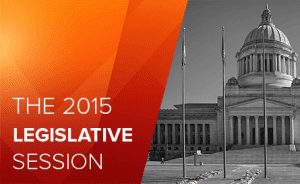
By the LEV Policy Team
In Washington state, it is the state’s “paramount duty” to fund a program of basic education for all students. It is the Legislature’s responsibility to define that program of basic education. The Legislature has established goals for the education system, as well as a program intended to achieve those goals. The program of basic education can be changed and added to. It may only be reduced for educational reasons, not financial reasons. The instructional program of basic education is provided through the K-12 system, as well as in juvenile detention facilities, residential facilities, and adult correctional facilities (RCW 28A.150.200).
The Goals of Basic Education (RCW 28A.150.210)
- Read with comprehension, write effectively, and communicate successfully in a variety of ways and settings and with a variety of audiences;
- Know and apply the core concepts and principles of mathematics; social, physical, and life sciences; civics and history, including different cultures and participation in representative government; geography; arts; and health and fitness;
- Think analytically, logically, and creatively, and to integrate technology literacy and fluency as well as different experiences and knowledge to form reasoned judgments and solve problems; and
- Understand the importance of work and finance and how performance, effort, and decisions directly affect future career and educational opportunities.
The Program of Basic Education (RCW 28A.150.220)
The program of basic education is the legislatively defined basic education that the state must fully fund. Districts must use state funding to provide all of the following components to students.
Time:
• 1,000 hours of instruction for full-day Kindergarten (being phased in)
• 1,000 hours of instruction for grades 1-8 (districtwide average)*
• 1,080 hours of instruction for grades 9-12 (districtwide average)*
• At least 180 school days
*Can be calculated as districtwide average of 1,027 hours grades 1-12
Academics:
• Instruction in the Essential Academic Learning Requirements (adopted by Office of the Superintendent of Public Instruction)
o The Arts
o English Language Arts (Common Core)
o English Language Proficiency
o Early Learning
o Math (Common Core)
o Science
o Social Studies
o Educational Technology
o Health and Physical Education
o Integrated Environment and Sustainability
o World Languages
• The opportunity to complete 24 credits for a high school diploma
Supports:
• Learning Assistance Program—supplemental instruction for “underachieving” students
• Transitional Bilingual Instructional Program—supplemental instruction for English Language Learners
• Special Education—appropriate education and supports for students with disabilities
• Highly Capable Program—programs for highly capable students
• Transportation (RCW 28A.150.200)
Components provided in the prototypical school funding formula (RCW 28A.150.260), such as Materials, Supplies, and Operating Costs (MSOC) or specific staffing ratios do not constitute the program of basic education. They represent the Legislature’s assumptions of what resources are required to provide the program of basic education, but districts may choose to deliver the program in a different way.
Basic Education Compliance
Each district must certify to the State Board of Education that it is providing students with the minimum requirements of the basic education act. Districts must report that they provide:
- K-12 students with 180 days of instruction
- Kindergarten students with either 450 or 1,000 instructional hours, depending on full-day Kindergarten phase-in
- Grades 1-8 students with a districtwide average of 1,000 instructional hours and grades 9-12 students with a districtwide average of 1,080 instructional hours, OR a districtwide average of 1,027 hours across grades 1-12
- The opportunity to complete a 24-credit high school diploma
Instructional Hours: the definition of instructional hour is time in the school day from the beginning of the first period class to the end of the last period class, except for time spent on meals. Passing time and recess are counted as instructional time.
View / Download PDF


 As discussed in our
As discussed in our  In the 2017 legislative session, Washington state is poised to make historic investments in basic education. But what will those dollars buy? The current program of “basic education” is not robust enough to meet our “paramount duty” and ensure that all students have the knowledge and skills to compete in today’s economy and participate in our state’s democracy. The upcoming investment provides an unprecedented opportunity to rethink our system of education and the resources and tools at our disposal to provide Washington students with the education promised by our Constitution.
In the 2017 legislative session, Washington state is poised to make historic investments in basic education. But what will those dollars buy? The current program of “basic education” is not robust enough to meet our “paramount duty” and ensure that all students have the knowledge and skills to compete in today’s economy and participate in our state’s democracy. The upcoming investment provides an unprecedented opportunity to rethink our system of education and the resources and tools at our disposal to provide Washington students with the education promised by our Constitution.

 The League of Education Voters has long argued that a child’s education should be a continuum with seamless transitions from early learning through higher education. We have worked with partners around the state in pursuit of that vision, including with the
The League of Education Voters has long argued that a child’s education should be a continuum with seamless transitions from early learning through higher education. We have worked with partners around the state in pursuit of that vision, including with the 